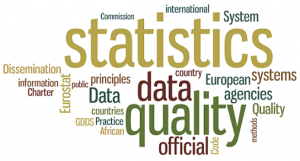- Population Statistics
- Census
- i. The main source of population statistics in India is the decennial census. The first census was taken in 1871-72 but is generally left out of account. Though based on uniform schedules and modern concepts, it was not a synchronous project; nor did it cover the whole country. The next census, taken in 1881, was a modern, synchronous and comprehensive operation. Since then, we are having a population census once every ten years.
- ii. In its literal sense, the term population census means an official count of all the people either physically present or regularly residing in a given region at a given point of time. A natural extension of the meaning makes a census include within its scope the collection of information on various aspects of the people counted- such as age, sex, race, religion, marital status, educational level attained, etc.
- iii. There are two distinct methods of census-taking: the canvasser method and the householder method. Under the first method, an enumerator approaches every household allotted to him and records the answers on the schedules himself after ascertaining the particulars from the head of the households in his jurisdiction and the head of each household is expected to fill the answers in respect of all the household member; the enumerator collects back the answered schedules after the census date. While each method has its merits and drawbacks, it is clear that in countries where literacy is still low, the canvasser method is the only practical method.
- iv. Another important question is whether a population should be counted on a de facto or a de jure basis. In the first case, every person is counted at the place where he/she is actually found on the reference date of census. In the second case, a person is counted at the place of his/her normal residence. Enumeration of de facto population is difficult unless the movement of the population is restricted on the census day and the entire operation is completed in a single night, which is operationally impossible. Enumeration by the de jure method is also difficult, but it has the advantage that the work of enumeration can be spread out over a number of days.
- v. Currently, Indian censuses are conducted under the Census Act of 1948, by virtue of which all citizens are legally bound to supply data sought during a census and the census authorities are also legally bound to utilise the census data for statistical purposes alone. Prior to 1954, there was no permanent census organisation. A Census Commissioner used to be appointed about 18 months before the census date and the whole census organisation used to be disbanded soon after the census operation was over. With the creation of the post of Registrar General, India (RGI), in 1949, the RGI, as ex-officio Census Commissioner, became the permanent authority to conduct all future censuses. Before every census, there is appointed a Director of Census operations in each State (or Union Territory), who is charged with the overall supervision of the census wok in the area under his jurisdiction. Below the Director, there are District Census Officers. Again, each district is divided into a number of Charges, each under a Charge Superintendent. Each Charge, in turn, is divided into a number of Circles, each under a Circle Supervisor. Finally, each Circle is divided into a number of Blocks, and an Enumerator is appointed to collect data for a whole Block. Normally, patwaris and school teachers are appointed as Enumerators in rural areas, and school teachers and local officials in urban areas.
- vi. In the first stage of the operation, conducted some months before the actual enumeration, all houses and households residing in them are listed in the house list schedules, along with related information. Using the data on household size, Blocks are formed, each comprising a population of about 750 in rural areas and about 600 in urban areas. At the time of enumeration proper, the house list pertaining to each Block is updated. During the enumeration period, enumerators visit all households in their respective Blocks ad fill in the household schedules as well as the individual slips, and during the next few days, they make a revision round of all households, making necessary corrections for birth and deaths during occurring up to the reference date and for people arriving in the households in the meantime who have not been enumerated elsewhere. The houseless people (e.g. the pavement dwellers) are enumerated on the last night of the census period (i.e. on the night preceding the census date) at the place where they are found.
- vii. Certain types of information, such as name, relationship to the head of household, sex, age, marital status, mother-tongue, religion, occupation, literacy and educational attainment, etc., have always been included in the census schedule, but some additional items have also been included at times. Starting with the 1951 census, increasingly greater emphasis is being laid on economic aspects of the population. Some additional items of demographic interest, like birth-place, place of last residence and duration of residence at the place of residence, for all people, and age at marriage and number of children born in the last one year, for married women, were included in the censuses of 1971, 1981 and 1991.
- Census
Click here for government certification in Accounting, Banking & Finance
Click here for government certification in Statistics and Quality





5 Comments. Leave new
Good work
Very well explained..
Very well Structured 😀
and the points included were really awesome 😀
GOd work 😀
Well articulated
well written.. interesting one